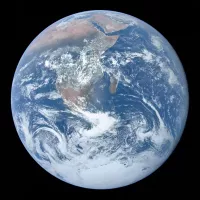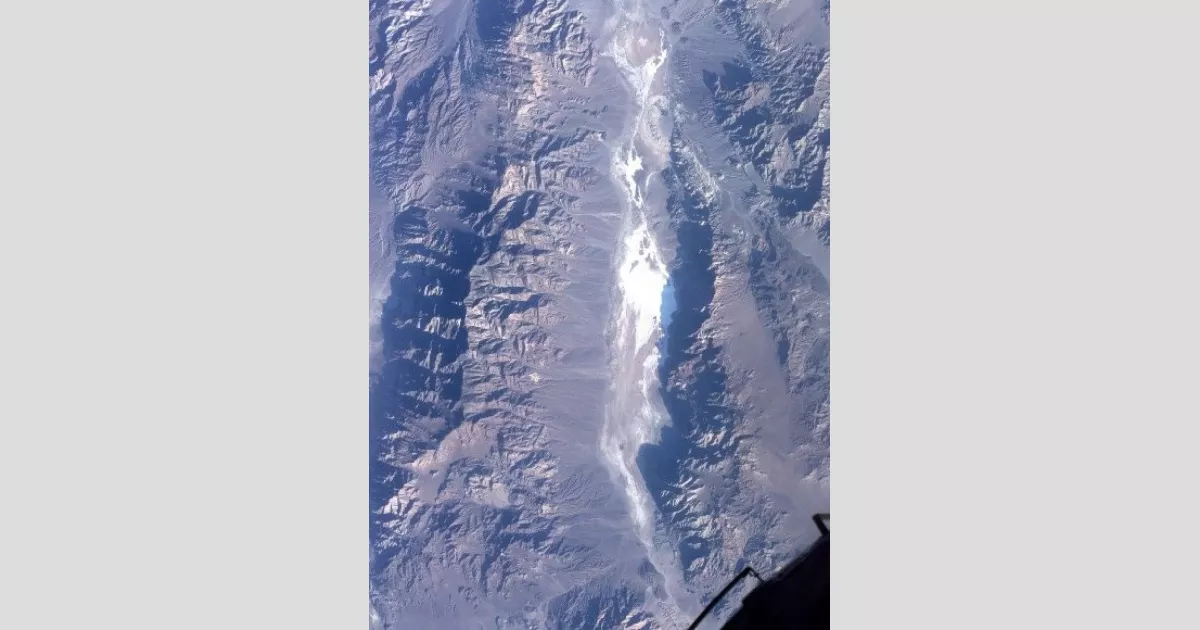Death Valley is a desert valley located in Eastern California, situated in the northern Mojave Desert and bordering the Great Basin Desert. Notably, it's considered the hottest place on Earth, especially during the summer months. Its extreme temperatures and arid environment define its unique and challenging landscape.
1907: End of Borax Exploitation Period
Around 1907, the exploitation of evaporitic salts like sodium salts and borax, which had been ongoing since 1883, came to a close in Death Valley.
January 2, 1913: Lowest Temperature Recorded
On January 2, 1913, Death Valley recorded its lowest temperature at Greenland Ranch (now Furnace Creek) which was 15 °F (−9 °C).
July 10, 1913: Highest Temperature Recorded
On July 10, 1913, the United States Weather Bureau recorded a high temperature of 134 °F (56.7 °C) at Furnace Creek in Death Valley, which stands as the highest ambient air temperature ever recorded on the surface of the Earth. This reading, however, is disputed by some modern experts.
1917: Consecutive Days Reaching 120°F
In the summer of 1917, Death Valley had 52 days when the temperature reached 120 °F (49 °C) or above, with 43 of them being consecutive.
July 5, 1918: Disputed High Overnight Temperature
On July 5, 1918, the highest overnight or low temperature recorded in Death Valley was 110 °F (43 °C), but this value is disputed.
January 1922: Snow with Accumulation Recorded
In January 1922, snow with accumulation was recorded in Death Valley.
1922: Inaccurate Libya Temperature Report
In 1922, a report of a temperature of 58 °C (136 °F) in Libya was later determined to be inaccurate.
1929: No Rain Recorded
In 1929, no rain was recorded for the entire year in Death Valley.
1931: Start of Driest Stretch
1931 marked the beginning of the driest stretch on record, lasting until 1934, during which only 0.64 inches (16 mm) of rain fell in Death Valley.
February 11, 1933: Death Valley National Monument Proclaimed
On February 11, 1933, President Herbert Hoover proclaimed Death Valley National Monument, placing the area under federal protection.
1934: End of Driest Stretch
The driest stretch on record ended in 1934, with a total of only 0.64 inches (16 mm) of rain recorded in Death Valley over the 40-month period from 1931.
1953: No Rain Recorded
In 1953, no rain was recorded for the entire year in Death Valley.
July 15, 1972: Highest Surface Temperature Recorded
On July 15, 1972, the highest surface temperature ever recorded in Death Valley was 201.0 °F (93.9 °C), at Furnace Creek, marking it the highest ground surface temperature ever recorded on earth.
1989: No Rain Recorded
In 1989, no rain was recorded for the entire year in Death Valley.
1994: Redesignation as National Park
In 1994, Death Valley National Monument was redesignated as Death Valley National Park and expanded to include Saline and Eureka Valleys.
January 1995: Wettest Month on Record
In January 1995, Death Valley experienced its wettest month on record, with 2.59 inches (66 mm) of rainfall.
1996: Extreme Heat in Summer
During the summer of 1996, Death Valley had 40 days over 120 °F (49 °C) and 105 days over 110 °F (43 °C).
2001: Consecutive Days Over 100°F
In the summer of 2001, Death Valley experienced the greatest number of consecutive days with a maximum temperature of at least 100 °F (38 °C), totaling 154 days.
2004: Start of Wettest Period
Mid-2004 marked the beginning of the wettest period on record. By mid-2005, nearly 6 inches (150 mm) of rain had fallen in Death Valley, leading to ephemeral lakes and wildflower blooms.
February 2005: Formation of Lake Badwater
In February 2005, a large pool of greenish water stretched across most of the valley floor, forming Death Valley's Lake Badwater.
May 2005: Valley Floor Resumes Role as Salt Flats
By May 2005, the valley floor had resumed its role as Badwater Basin, salt-coated salt flats, after the lake formed in February began to evaporate.
2005: High Rainfall and Lake Formation
In 2005, Death Valley received four times its average annual rainfall of 1.5 inches (38 mm), causing the lowest spot in the valley to fill with a wide, shallow lake.
2005: End of Wettest Period
Mid-2005 marked the end of the wettest period on record, which began in mid-2004. Nearly 6 inches (150 mm) of rain fell in Death Valley, leading to ephemeral lakes and wildflower blooms.
February 2007: Evaporation of Lake Badwater
By February 2007, Lake Badwater in Death Valley had evaporated.
July 12, 2012: Reliable High Low Temperature and Warmest 24-Hour Temperature
On July 12, 2012, Death Valley recorded a reliable record high low of 107 °F (42 °C). Also on this day, the mean 24-hour temperature recorded was 117.5 °F (47.5 °C), making it the world's warmest 24-hour temperature on record.
June 30, 2013: Verified High Temperature
On June 30, 2013, a verified temperature of 129.2 °F (54.0 °C) was recorded in Death Valley, tying with Mitribah, Kuwait, for the hottest reliably measured air temperature ever recorded on Earth.
August 16, 2020: Unverified High Temperature
On August 16, 2020, a temperature of 130 °F (54.4 °C) was recorded at the Furnace Creek weather station in Death Valley, but has not yet been officially verified.
July 9, 2021: Another Unverified High Temperature
On July 9, 2021, Death Valley again recorded a temperature of 130 °F (54.4 °C); however, that temperature has not yet been officially verified.
July 2024: Hottest Month Ever Recorded
July 2024 was the hottest month ever recorded in Death Valley, with a mean daily average temperature over the month of 108.5 °F (42.5 °C).
Mentioned in this timeline
Libya officially the State of Libya is a North African...

Earth the third planet from the Sun is unique in...
Greenland is an autonomous territory within the Kingdom of Denmark...

Heat in thermodynamics is defined as energy transferred between a...
A national park is a protected area designated by a...
Trending

2 months ago Keon Coleman's performance impacts Bills-Chiefs game, influencing Brandon Beane's trade strategy.
3 months ago Quentin Johnston's Week 5 Status: Injury Update, Fantasy Advice, and Player Props

1 month ago Government Shutdown: Americans Scrambling, Washington's Economy Hit, and Tourism Suffers in D.C.
2 months ago Margaret Brennan interviews Jeffries, Bessent on China, and Cuban on healthcare innovation.

3 months ago Lindsey Graham Predicts Shutdown End, Republicans Stand Firm on Healthcare Subsidies
6 months ago Deco challenges Lamine Yamal to be the best; Hails Raphinha, Overlooks Messi.
Popular

Candace Owens is an American conservative political commentator and author...

Tucker Carlson is an American conservative political commentator known for...

XXXTentacion born Jahseh Dwayne Ricardo Onfroy was a controversial yet...

Ben Shapiro is a prominent American conservative political commentator media...

William Franklin Graham III commonly known as Franklin Graham is...

Bill Gates an American businessman and philanthropist revolutionized personal computing...
